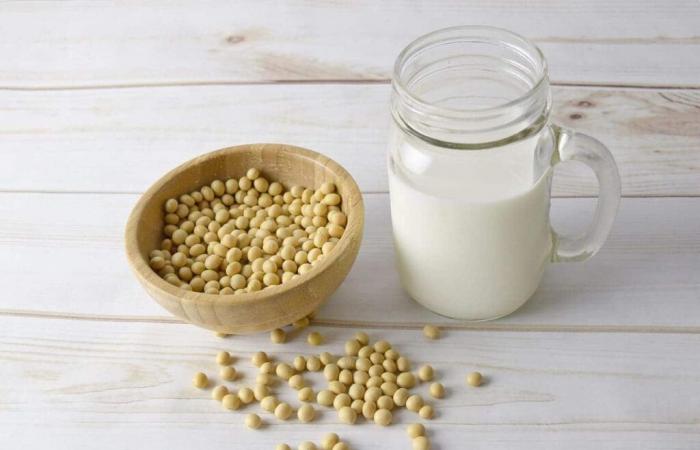France has declared war the soybeans. LThe National Health Security Agency (ANSES) has asked for the withdrawal of all foods with soy. According to health authorities, Excessive soybean consumption can present certain health risks.
Soybeans has a high concentration of isoflavonessome compounds that “They can have harmful effects on health, particularly on the reproductive system if consumed in large quantity«. In fact, even the most apparently healthy foods, such as yogurts or milk, They must be consumed in moderation.
Why are the isoflavonas
Soy is increasingly present in our dishes, However, its consumption in children often generates doubts. Are these concerns grounded? The French health security agency, the environment and work (ANSES) He believes yesand has established strict limits for the intake of isoflavones.
Isoflavonas are phytoestrogens, natural compounds present in soybeans and their derivatives. These molecules have a structure similar to Estrogenswhich has generated interest in its possible health benefits (such as relieving the symptoms of the menopausestrengthen bones and prevent certain cancers) and at the same time concern for their potential to alter the hormonal system, especially in child population.
Therefore, The National Health Security Agency (ANSES) has issued specific recommendations about its consumption. Thus, a daily toxicological reference value (VRT) has been established for these substances: 0.02 mg per kilogram of body weight for the general population and 0.01 mg per kilogram for vulnerable groups, including children before puberty.
To put in perspective, In France it was estimated that these limits were exceeded in 53-76 % of children aged 3 to 18, as well as 47 % of adults over 18 years old. These figures, obtained following a precautionary approach, are mainly based on animal studies, which generates doubts about their direct applicability to humans. Are results extrapolable in animal models to our children?
‘Obvious’ limitations of animal studies
Animal studies have been fundamental to identify possible risks associated with isoflavones. However, these present several limitations that can hinder their extrapolation to humans, such as Metabolic differences.
Rodents metabolize isoflavones less efficiently than humans due to differences in their ability to combine by glucuronidation. This results in much higher plasma concentrations than in people.
Besides, las dose are unrealistic. Many studies use extremely high doses of isoflavones that far exceed typical human consumption, which can exaggerate effects that do not occur to normal dietary levels.
Also, las Administration routes are not comparable. In animals, isoflavones are usually administered by injection or through methods that avoid the human digestive system, altering their biodisponability and activity.
The same goes for the intestinal microbiota, which plays a crucial role in the metabolization of isoflavones in active compounds such as equol. Since microbial composition varies significantly between species, the results obtained in animals may not reflect what happens in humans.
Hence, these limitations underline the need to interpret the data obtained in animal models in caution when evaluating risks to human health.
-Reassuring aspects in people
Unlike what studies in animals suggest, The evidence in humans offers a more reassuring vision in relation to potential damages derived from exposure to isoflavones.
Various systematic reviews have shown that soybean consumption during childhood is not associated with the early appearance of puberty or with Alterations in the age of menarchy.
These findings contradict the first concerns based on animal studies, which suggested that phytoestrogens of soy formulas could alter hormonal development.
Moreover, Human data consistently shows that soybean consumption during childhood does not imply a risk for normal pubertal development.
Besides, Long -term studies in children fed with soy protein formulas have not revealed hormonal effects similar to those of estrogenand bone metabolism markers remain within normal ranges.
Caution
The position adopted by National Health Security Agency of France (ANSES) It reflects a strict application of the precautionary principle, a strategy designed to minimize potential risks to scientific uncertainty.
While this approach prioritizes security, it can ignore robust evidence that supports the nutritional benefits and the security of moderate soybeans.
In a sense, it is convenient to note that France is the only country in the world that establishes a limitation of soybean consumption. In contrast, other international institutions not only do not limit soybean consumption, but include it as part of a healthy diet.
Thus, the European food Security Authority (EFSA) Consider isoflavones safe when consumed as food supplements for postmenopausal women, and Canadian food guides include soy -based products as an integral part of a healthy diet.
Also in Australia and the United States, food derived from soybeans is recognized as valuable sources of plant protein and micronutrients essential for child growth.
Approach based on scientific evidence
The debate on isoflavones illustrates the difficulty of transferring the complexity of scientific research to coherent public policies. While preclinical studies have generated concerns about their hormonal activity, decades of evidence in humans deny that they are endocrine or dangerous disruptors in habitual consumption amounts.
It is crucial to adopt an evidence -based approachthat considers both possible risks and the demonstrated benefits of moderate soybeans. For all these reasons, consumed responsibly, soybeans is not only safe, but also nutritious and beneficial for children and adults.






